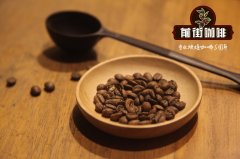Decaffeinated coffee | New processing technology brings decaffeinated coffee back to life | decaffeinated coffee is in danger.

Decaffeinated coffee
Decaffeinated coffee has long been an outcast in the coffee world-especially among coffee connoisseurs, bakers and caffeine aficionados. The reputation of decaffeinated coffee ranges from mediocre to very dangerous, depending on who you ask. Some people hate the taste of coffee, while others worry about chemicals or carcinogens in coffee.
But the dark ages are over! Decaffeinated coffee is no longer the pariah of the coffee beans it used to be. In the past few decades, with technological progress and innovation, the process of decaffeination has been greatly improved, making it a healthier choice than in the past, and now it has also improved taste.
When decaffeinated coffee originated, the idea of turning a cup of coffee into a decaffeinated cup by using chemical solvents has become a reality. Dip coffee into various chemical compounds that extract caffeine and produce decaffeinated. However, it is this process that has made full Coffee lose its bad reputation today. The use of chemicals, especially in the early stages of decaffeination, causes coffee to taste substandard. In addition, the earliest decaffeinated processes used chemicals such as benzene and chloroform as solvents-toxic or known carcinogens. As a result, decaffeinated coffee has a low status in the world.
Swiss water treatment and mountain water treatment
Today, however, everything is different. Chemical processing is still in use today, but it is no longer as harmful to health as it used to be. Coffee science has developed to use other methods to remove caffeine from coffee, especially water treatment methods have gained great momentum. There are two very popular ways to treat your coffee with water to remove caffeine-one is the Swiss water decaffeinated coffee process (so called because it is a company trademark-not because it is specially made from Swiss water). The other is the landscape process (also registered trademark).
The Swiss water treatment process uses a liquid called Green Coffee extract, or GCE, which is produced by removing caffeine from a batch of raw beans and then discarding them. GCE then passes through a special charcoal filter-the shape of which only filters caffeine molecules-and is then introduced into a batch of raw beans. GCE helps maintain the taste of coffee throughout the decaffeinated process. The beans are treated the same way, but since GCE is saturated with oil and flavor (but without caffeine), this means that decaffeinated coffee will remain rich in flavor.
The Swiss water law and the mountain water law each claim to remove 99.9% of caffeine from their batches.
Today, Swiss water treatment plants are located in Canada, and you can find local retailers or coffee shops that use their own coffee beans for caffeine. The landscape law is located in Mexico.
It is speculated that researchers are working on a decaffeinated coffee tree-where decaffeinated coffee beans can grow on their own. It may take a few more years, but it is sure to be a game changer in the coffee world.
Important Notice :
前街咖啡 FrontStreet Coffee has moved to new addredd:
FrontStreet Coffee Address: 315,Donghua East Road,GuangZhou
Tel:020 38364473
- Prev

Boutique Coffee | how Coffee is transferred from Origin to Coffee Shop | Coffee Trade shift
If you have been to any boutique coffee shop recently, you may not only hear about the source of the coffee, the boutique coffee shop is very important, it can let you know the origin of the coffee and trace the origin. Isn't all trade direct? What exactly does indirect trade mean? Direct trade and fair trade as a term and a practice, direct trade coffee
- Next

What is cappuccino | the evolution of cappuccino | the cappuccino you are drinking is authentic
Cappuccino coffee is a staple in coffee shops around the world. Its classic feature lies in its dry foam lid. But it's not as simple as it seems: the widely misunderstood drink has changed a lot over the years. What is cappuccino coffee? Cappuccino is a classic espresso and milk drink. A common misconception is that it follows three
Related
- Beginners will see the "Coffee pull flower" guide!
- What is the difference between ice blog purified milk and ordinary milk coffee?
- Why is the Philippines the largest producer of crops in Liberia?
- For coffee extraction, should the fine powder be retained?
- How does extracted espresso fill pressed powder? How much strength does it take to press the powder?
- How to make jasmine cold extract coffee? Is the jasmine + latte good?
- Will this little toy really make the coffee taste better? How does Lily Drip affect coffee extraction?
- Will the action of slapping the filter cup also affect coffee extraction?
- What's the difference between powder-to-water ratio and powder-to-liquid ratio?
- What is the Ethiopian local species? What does it have to do with Heirloom native species?

